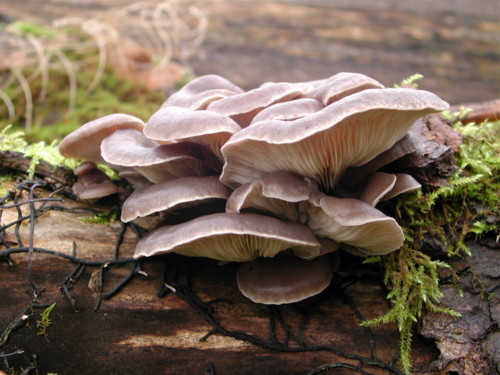Could Plastic-Eating Mushrooms Save The Environment?
Plastic takes a really, really long time to break down on its own. And, according to the New York Times, about 300 million tons of it are produced globally each year, with only about 10 percent being recycled. That means that the buildup of plastics in our landfills and oceans is higher than ever, and while reducing the amount of plastic we produce as a society is critical, we must also deal with the issue of what to do with the “islands” and “mountains” of plastic that have already accumulated on our planet.
When we think about the 100 million people starving worldwide today, a potential solution for both crises starts to look especially appealing. What if we could neutralize the toxicity of plastic, and transform it into something that is not only non-toxic, but also edible, nutritious, and tasty? Turns out, we can, with a little help from our mycological friends.
Scientific interest in the idea of a plastic-eating mushroom began at Yale University in 2012, where a group of students discovered that a rare mushroom from the Amazon, Pestalotiopsis microspora, was capable of subsisting off of polyurethane alone. (Polyurethane is the essential component of plastic products.) Students discovered that Pestalotiopsis microspora could live without oxygen, which suggests that it could exist at the bottom of landfills.
Scientific interest in the idea of a plastic-eating mushroom began at Yale University in 2012, where a group of students discovered that a rare mushroom from the Amazon, Pestalotiopsis microspora, was capable of subsisting off of polyurethane alone.
Austrian designer Katharina Unger of Utrecht University pushed this idea further in her innovative “Fungi Mutarium,” a controlled terrarium-like environment in which cups of agar (a seaweed-based gelatin) are filled with plastic waste, and mushroom spores. Over the course of a month or so, the fungi’s mycelium (roots) slowly grow, subsisting off of the plastic and materials in the agar cup’s walls, eventually completely consuming it and filling the cup, having transmuted the plastic into edible material. The final product can be flavored, filled with food, and even eaten whole. Unger describes the taste as “sweet with the smell of anise or licorice.” Her team even designed special cutlery for their cuisine.
Fungi Mutarium: Prototype from LIVIN Studio on Vimeo.
It also turns out that the mushrooms used in this project are common, and grow naturally all over the world: oyster mushroom (Pleurotus ostreatus), and Schizophyllum commune, a commonly-eaten fungi native to Mexico and India that happens to be listed as inedible in the US.
Currently, the entire process takes weeks to a few months for the plastic to completely disappear, but Unger’s team is working on accelerating the method, as well as researching other types of mushrooms that could be used.
While research still needs to be done to prove they’re completely safe for consumption, the notion of “plastic-eating mushrooms” is an exciting innovation that could potentially change the way human beings interact with plastic, for good. It’s not inconceivable to think that one day we’ll have Fungi Mutarium food banks for the hungry, special mushroom recycling programs, and private fungi recyclers in our homes as a testament to man’s ability to convert forgotten garbage into gourmet meals.



































